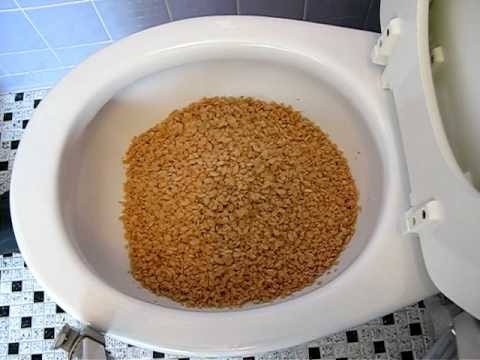Are You Capable to Dispose of Food Down the Toilet?
Are You Capable to Dispose of Food Down the Toilet?
Blog Article
We have encountered this great article pertaining to What Can Happen If You Flush Food Down the Toilet? directly below on the web and thought it made sense to relate it with you here.

Introduction
Many individuals are commonly faced with the dilemma of what to do with food waste, particularly when it involves leftovers or scraps. One usual concern that arises is whether it's fine to purge food down the toilet. In this article, we'll look into the reasons why people could consider flushing food, the consequences of doing so, and different approaches for proper disposal.
Reasons individuals might take into consideration flushing food
Lack of recognition
Some people may not know the potential damage brought on by purging food down the commode. They might incorrectly believe that it's a safe technique.
Benefit
Flushing food down the commode might appear like a fast and simple service to throwing away undesirable scraps, especially when there's no neighboring trash bin readily available.
Negligence
In many cases, individuals might just pick to flush food out of large laziness, without taking into consideration the effects of their actions.
Effects of flushing food down the bathroom
Ecological effect
Food waste that winds up in rivers can contribute to air pollution and damage marine communities. Furthermore, the water made use of to purge food can stress water sources.
Pipes issues
Flushing food can lead to clogged pipelines and drains pipes, creating expensive pipes fixings and inconveniences.
Sorts of food that need to not be purged
Fibrous foods
Foods with coarse textures such as celery or corn husks can obtain entangled in pipes and cause obstructions.
Starchy foods
Starchy foods like pasta and rice can take in water and swell, leading to obstructions in pipelines.
Oils and fats
Greasy foods like bacon or food preparation oils must never ever be purged down the toilet as they can strengthen and cause obstructions.
Proper disposal techniques for food waste
Making use of a waste disposal unit
For homes furnished with garbage disposals, food scraps can be ground up and purged via the pipes system. Nevertheless, not all foods appropriate for disposal in this way.
Recycling
Specific food packaging materials can be recycled, minimizing waste and minimizing ecological effect.
Composting
Composting is an environmentally friendly way to get rid of food waste. Organic materials can be composted and used to enrich dirt for horticulture.
The relevance of appropriate waste management
Decreasing ecological injury
Correct waste monitoring techniques, such as composting and recycling, help decrease air pollution and preserve natural deposits for future generations.
Safeguarding pipes systems
By avoiding the practice of flushing food down the bathroom, property owners can prevent expensive plumbing repairs and preserve the integrity of their pipes systems.
Verdict
To conclude, while it might be appealing to purge food down the bathroom for comfort, it is very important to recognize the possible consequences of this action. By taking on correct waste management techniques and getting rid of food waste properly, individuals can contribute to much healthier pipes systems and a cleaner setting for all.
FLUSH FOOD DOWN THE TOILET?
FLUSHING FOOD CAN CAUSE BLOCKED DRAINS IN YOUR HOME
All of the plumbing fixtures in your home are connected to the same sewer pipe outside of your home. This outdoor sewer pipe is responsible for transporting all the wastewater from your home to the Council sewer mains. Even small pieces of food that go down the kitchen sink can cause problems for your sewer. It should therefore be obvious that flushing larger bits of food, such as meat, risks a clog in either the toilet itself or the sewer pipes. Flushing greasy food is even more problematic because oil coagulates when it cools, coating the interior lining of your pipes.
THE TOILET IS NOT A BIN
Food isn’t the only thing that people shouldn’t be flushing down the toilet. People use the toilet to dispose of all kinds of things such as tampons, makeup wipes, dental floss, kitty litter and even underwear. Water goes to great lengths to educate residents about the high costs and stress placed on wastewater treatment systems simply from people flushing the wrong stuff down the toilet. It costs taxpayers millions of dollars each year, and homeowners thousands in blocked drain repairs.
FLUSHING FOOD IS A WASTE OF WATER
Flushing food is a waste of our most precious resource - water. In June this year Level 1 water restrictions were introduced to protect water supply from drought conditions. Much of New South Wales continues to be affected by prolonged drought with recent figures revealing up to 97 per cent of the state remains in drought. Depending on whether you have a single or dual flush toilet, every single flush uses between five and 11 litres of water. In the current climate this is a huge amount of water to be wasting on flushing food that should be placed in the bin (or better yet, the compost).
https://www.jabplumbingsolutions.com.au/blog/can-you-flush-food-down-the-toilet

We were made aware of that report about Is it safe to flush food (especially rice) down the toilet? through an associate on a different site. Loved our write up? Please quickly share it. Let others find it. Kudos for being here. Please check our website back soon.
Book 24/7 Report this page